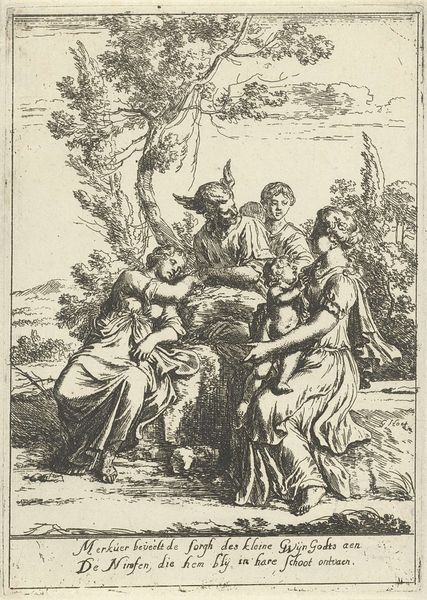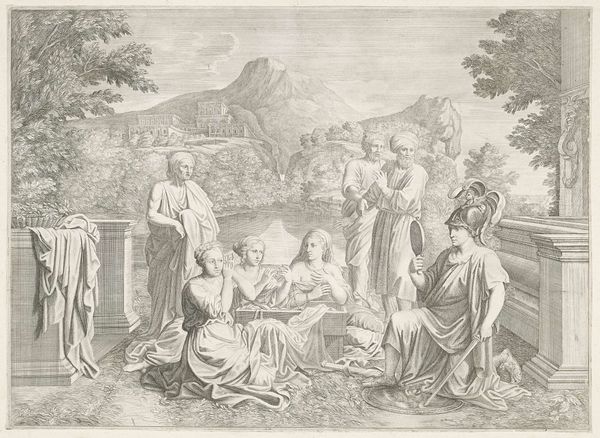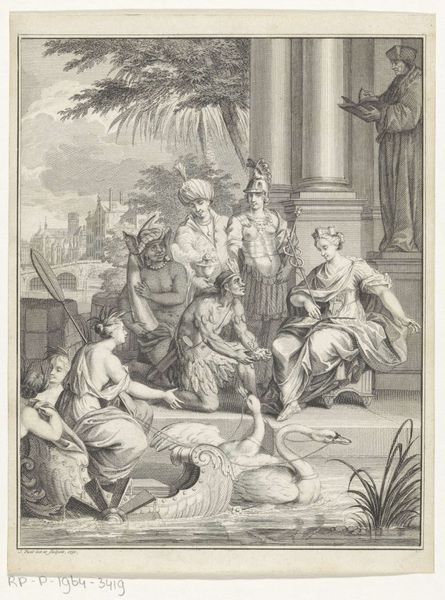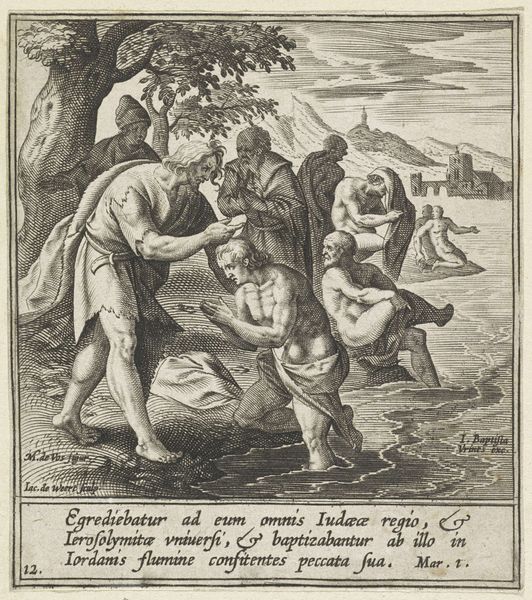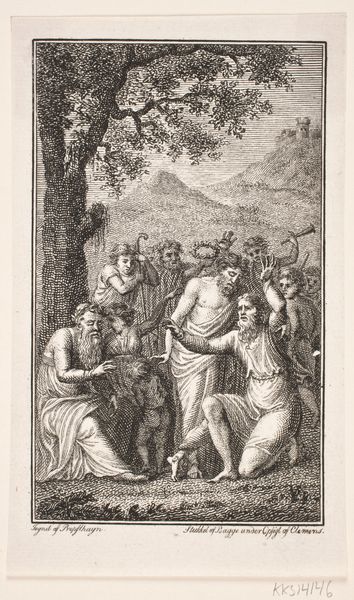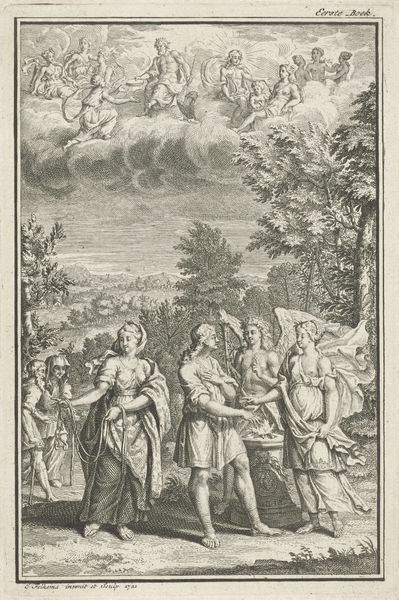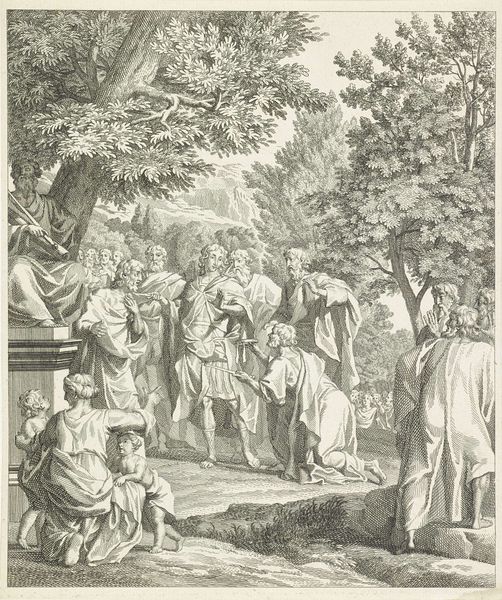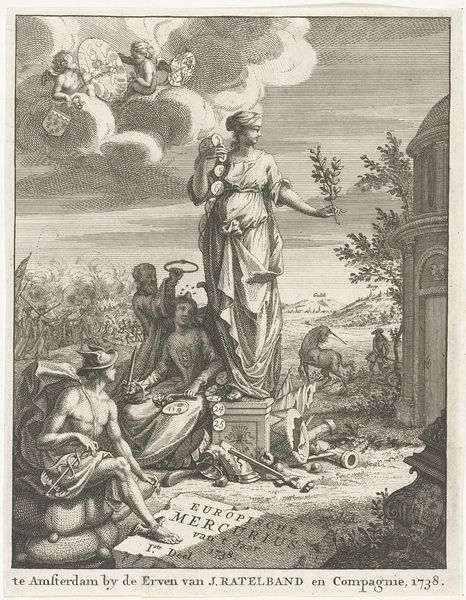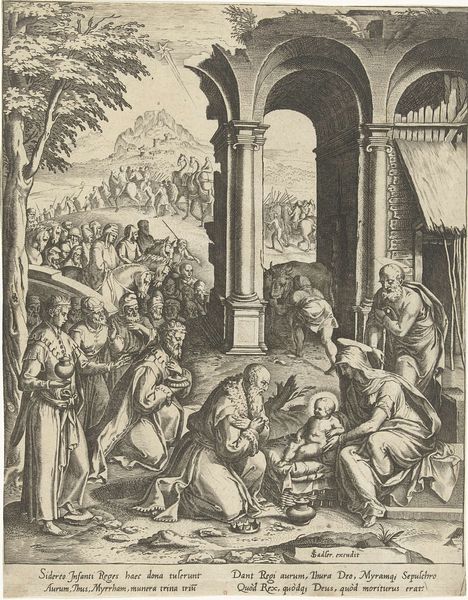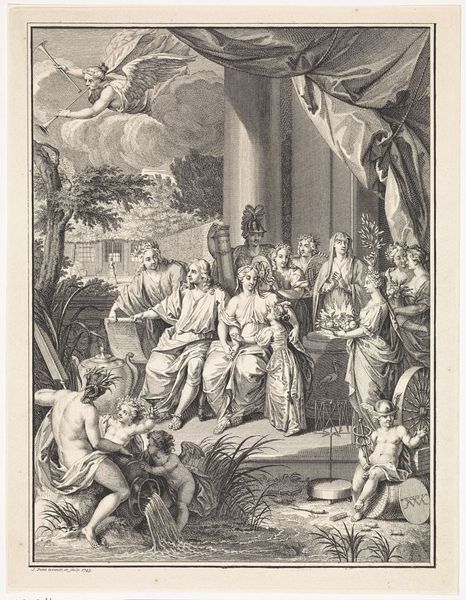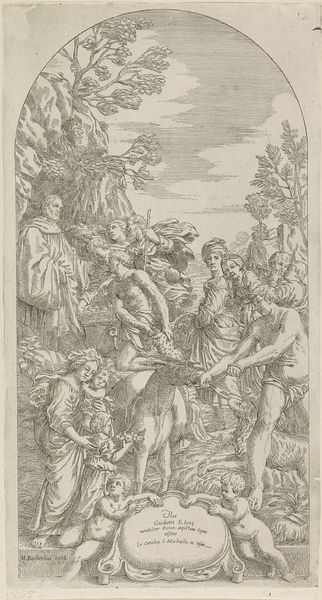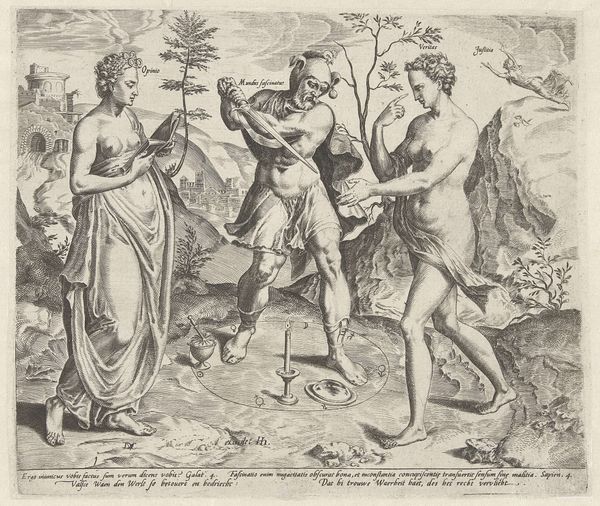
print, engraving
#
baroque
# print
#
old engraving style
#
figuration
#
history-painting
#
engraving
Dimensions: height 172 mm, width 134 mm
Copyright: Rijks Museum: Open Domain
Editor: This is "Melaatse op de dag van zijn reiniging," or "Leper on the Day of his Cleansing" by Simon Fokke, made sometime between 1722 and 1784. It’s an engraving, currently at the Rijksmuseum. The level of detail achieved through engraving is really remarkable! What stands out to you in terms of the print’s construction and content? Curator: Let’s consider the process of creating an engraving like this. The artist meticulously carves into a metal plate – the labor involved is substantial. Notice how Fokke utilizes line weight and density. Where does he concentrate these denser lines and what effect does that have? Editor: He seems to focus the darkest lines around the figures performing the ritual, like the man dunking the bird and the leper himself. It draws the eye and emphasizes their roles. Curator: Precisely! And consider the economics of printmaking in this era. Who would have been the likely consumers of such images? How does the accessibility of printed images compare to painted ones, and what implications does this have for disseminating ideas about disease, healing, and social norms related to health at the time? Editor: Well, prints would be more affordable than paintings, so probably a broader audience could engage with these kinds of depictions, helping spread information about the ritual. Curator: Exactly. It’s fascinating how a technique, in this case, engraving, enables the wider circulation of an image, impacting societal views. Are the effects different if this was an unique work versus reproducible engraving? Editor: Definitely! Mass production via prints allows for the democratization of an image, changing its impact. Curator: A vital consideration. I've learned much from your view. Editor: Likewise! This discussion of materials and process has given me a deeper appreciation for this engraving.
Comments
No comments
Be the first to comment and join the conversation on the ultimate creative platform.
